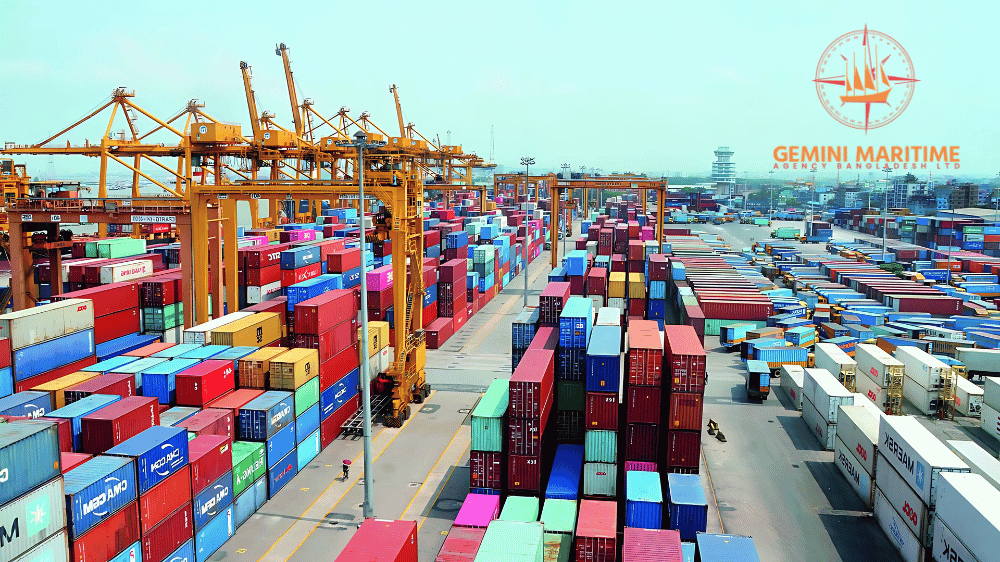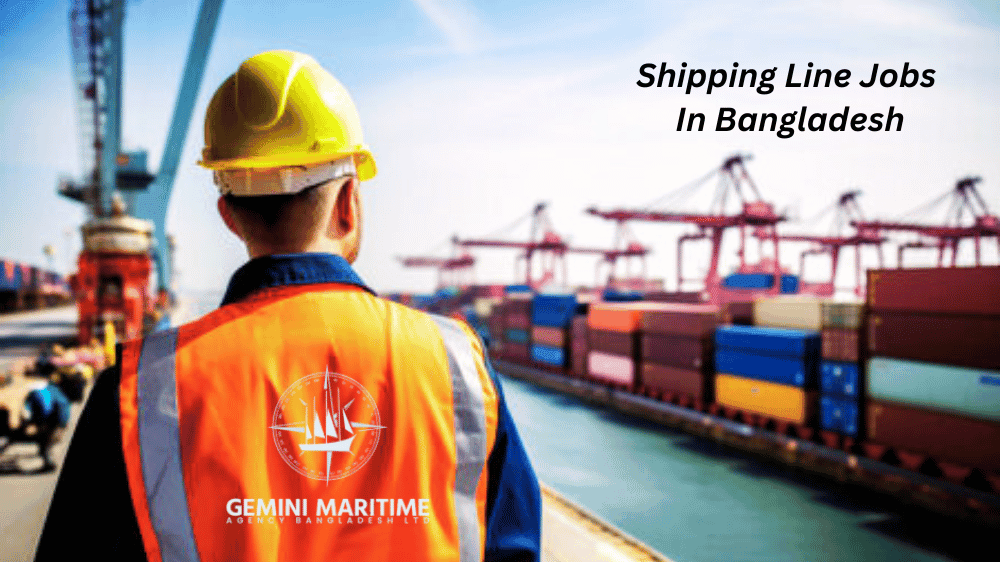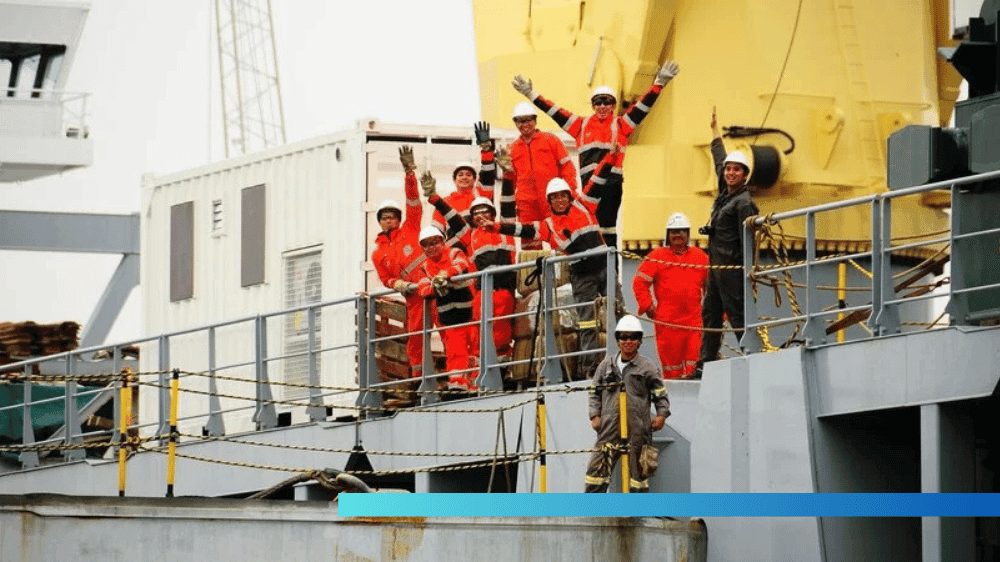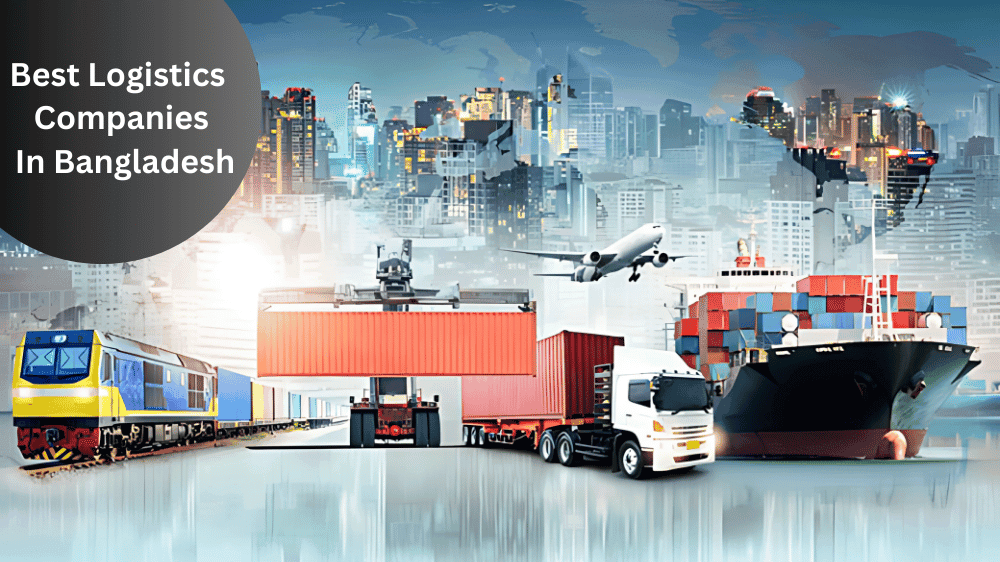The Port of Chittagong, also known by its official name, the Port of Chattogram This is the biggest port and the most important in Bangladesh.
Geographically, this port lies on the southeastern coast of Bangladesh along the Bay of Bengal; hence plays important role in the economic factor of the country. At the very start, it becomes the main entry point through which international trade and maritime transport come in. Strategically located, deep water facilities and well-developed infrastructure keep the port very essential in the import-export activities of Bangladesh.
Location and Geography
Chittagong (Chattogram) is the port city of Chittagong, approximately 240 kilometers southeast of Dhaka city, the capital of Bangladesh. The port is on the Bay of Bengal, which cuts across all critical global maritime trade routes. It could easily be accessed by or is closest to major shipping lanes; thus, it becomes an important strategic point for international trade.
Port of Chittagong, History
The Port of Chittagong has an ancient and proud history from early times. In the early times, it was one of the most significant trade and commercial centers, with yet lessons of maritime activity found in the 9th century. Modern port infrastructure began to take real shape during British rule. Over time, the port has been much developed, with many terminals, warehouses, and container facilities constructed; it remains one of the busiest ports in South Asia.
Economy Reliance on Chittagong Port
Chittagong Port is the core port in Bangladesh serving around 90% of the total trade volume of the country. It is crucial for both import and export of things including raw material, machinery and petroleum imports for exports of textile, ready-made garments, and agricultural products-. Promoting economic development of the country contributing to GDP pretenses over a million job placements. The textile and ready-made garment (RMG) industry in Bangladesh-the largest in the world- largely depends on the port for import and export purposes. It is no less important when it comes to promoting agricultural export of rice, jute, and fishery products.
Port Facilities and Infrastructure
The Port of Chittagong has modern facilities and infrastructure that enable it to be capable of handling almost all types of cargo. Bulk cargo, Container, and General Cargo terminates are the distinct terminals where it deals with different types of cargos.
Some of the key terminals in the port include:
The Container Terminal: The Container Terminal that deals with more than half of containerized cargo assuring swift loading and unloading of goods.
>The General Cargo Terminal: General Cargo Terminals Not only containers but also bulk commodities and project cargo fall under the handling of General Cargo Terminal.
>The Oil and Gas Terminal: Oil and Gas Terminal deals with imports and exports concerning petroleum and gas products.
>The port has also seen improvements in its capabilities, with the addition of modern cranes, deep-water facilities, and an expansion of storage and container handling capacity.
Port of Chittagong, Berths List and Details
Port of Chittagong has constructed specially designed berths for different types of vessels and cargoes. The present Port of Chittagong has over 20 berths under different terminals and cargo handling facilities and their peculiar functions.
Here is a detailed explanation of the top berths at the Port of Chittagong:
Container Berth (CTG Berths 1-7)
Description: These berths are reserved for the largest part of the port trade containerized cargoes. The container berths are equipped with high-tech gantry cranes, quay cranes, and modern container handling facilities.
Capacity: At the berth, they can accommodate larger container vessels with a depth of 10-12 meters.
Location: At the area of the main container terminal.
Function: Mainly used for importing and exporting containers of goods such as textiles, garments, electronics, and machinery.
Bulk Cargo Berth (BC Berths 1-5)
Description: This berth is actually for any bulk commodity like coal, fertilizers, rice, and any other bulk common goods; while the bulk cargo berths have specialized cranes and conveyor systems designed for the effective loading and unloading of bulk materials.
Capacity: These have a depth of around 9-10 meters, which is appropriate for a bulk carrier.
Location: The bulks areas in port.
Function: These berths are much important for raw material shipment of various industrial sectors in Bangladesh.
Oil and Gas Berths (OG Berths 1-3)
Description: These are for liquid bulk petroleum and natural gas products and thus are large enough for large tankers and oil vessels.
Capacity: These berths have generally a depth of 11-12 meters for accommodating larger oil tankers.
Location: This is the location of dedicated oil terminal section of the port.
Function: Example of above roles of these berths in importation into Bangladesh energy sector from petroleum, liquefied natural gas (LNG), and other products.
General Cargo Berths (GC Berths 1-4)
Description: These berths handle all sorts of non-containerized cargoes that include project cargo, machinery, and breakbulk. They possess cranes and provisions for handling stuff that is heavy or oversized.
Capacity: Depth varies around 8-10 m.
Location: Spread over the general cargo terminal of the port.
Function: These berths cover a wide range of cargo that does not fall under either category of containerized or bulk, that is, large machinery or steel products.
Roll-On/Roll-Off (Ro-Ro) Berths (Ro-Ro Berths 1-2)
Description: These berths are used for vessels called Roll-on/Roll-off, which carry wheeled cargo such as automobiles and trucks.
Capacity: It has a depth of around 8-9 m with certain facilities for vehicular loading/unloading.
Location: Located in the special Ro-Ro terminal of the port.
Function: Important for im- and exporting vehicles and rolling stock particularly to or from the international market.
Fishery and Seafood Berths (FS Berths 1-2)
Description: These are specialized berths, which are handling seafood products mainly with exports.
Capacity: These berths are specifically for refrigerated vessels having cold storages designated for them.
Location: Incorporated adjacent to the designated fishery export terminal of the port.
Function: These are very important for the seafood industry of Bangladesh to export fresh fish products around the world.
Port of Chittagong, Future Prospects
With an improvement in the capacity of the same. The above-mentioned expansion and modernization plans will always be on a continuous basis for operations-in-operation in the port. The ongoing projects suggest that it would enhance port capacity by adding new terminals. Deepening the harbor, and bringing in new technologies in the operation of the facility towards better efficiency. Meanwhile, the port is looking at improving connectivity with the inland transport networks as a strategy to streamline logistics and reduce bottlenecks.
Realizing how significant this port is for promoting trade in Bangladesh. The government saw itself fitting in big investments for modernization. Modernization complemented by the development of new ports and improvement in existing facilities. This will give the country a stronger competitive edge in international trade.
Hence, Gemini Maritime is still related to the Port of Chittagong. The Port of Chittagong is one key port of Bangladesh, creating an economy for the country. But strategically being one of the most important global assets in trade. As well as Port has a very strategic location, rich history, and continuous efforts for modernization. Which are all put in place to ensure. Then the port remains relevant to serve import and export activities within the country. Not only, but also the Port of Chittagong is the world gateway of Bangladesh, stretching its growing influence in the global economy.






